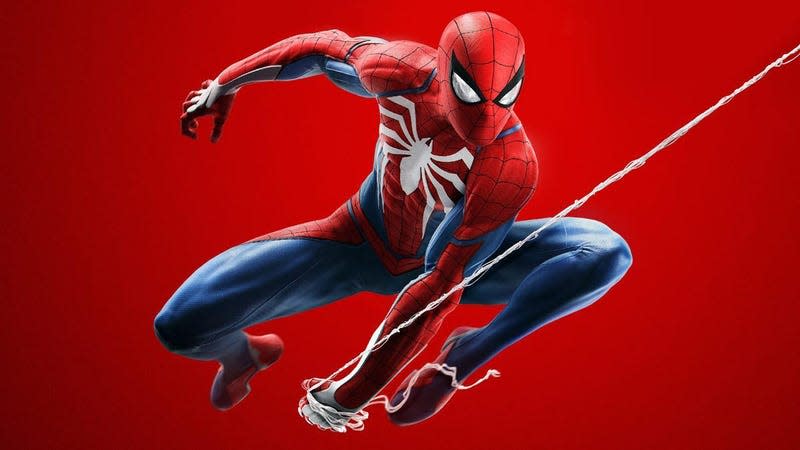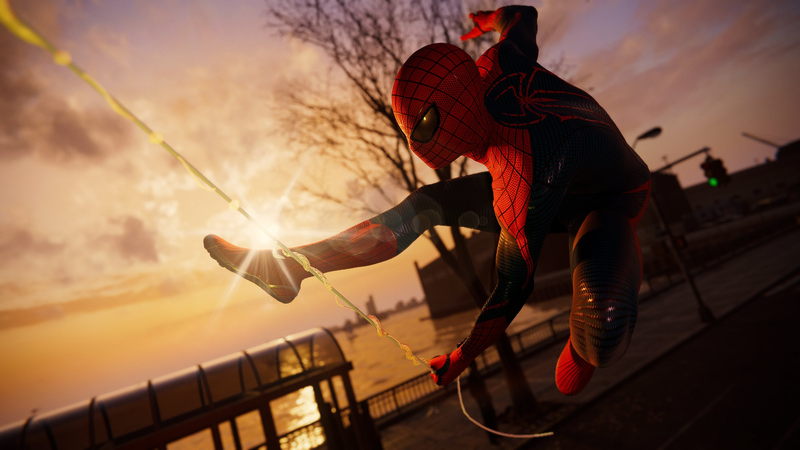Marvel's Spider-Man Got It Right

- Oops!Something went wrong.Please try again later.
Throughout the decades, Spider-Man has swung from one medium to another, each with varying levels of success. While he’s proven to be an especially great fit for animation, Marvel’s hero has also been no stranger to video games. The various titles that bear his name have been all over the place in terms of quality, with decent to great standouts like 2014's Spider-Man 2 tie-in game and 2005's Ultimate Spider-Man.
But as the hero became more of an important asset to Sony, his star power in the single-player space gradually waned. In 2014, The Amazing Spider-Man 2 game marked the end of Activision Blizzard’s hold on the license, meaning no solo games for Spidey after that point. It wasn’t until 2018 that the webhead would return with a game bearing his title, and one that was notably exclusive to PlayStation, at least, until an eventual PC release in 2022. Marvel’s Spider-Man released in 2018 as a PlayStation 4 exclusive from longtime Sony collaborator Insomniac Games (of Ratchet & Clank fame), and beyond its system exclusivity, you could feel a shift in the air when it came on the scene.
Read more
Joey Chestnut Suffers Spectacular Loss in Eating Competition
David Wells had a 'Sir, this is a Wendy's' moment when he bashed woke-ism and Yankees players
Writer Christopher Lloyd pens a beautiful tribute to his late wife, Harley Quinn actor Arleen Sorkin
Twitch Sensation Only Up! Removed From Steam So Dev Can Find ‘Peace Of Mind And Healing’
What Did Conan O’Brien Know About Danny Masterson 19 Years Ago?
The weirdness around Peter’s face and its proximity to the movies is worth noting because Marvel’s Spider-Man is so clearly aiming to play in the same space as the recent films, but on a frankly much more impressive scale. As voiced by Yuri Lowenthal, this version of Peter Parker feels like a fully formed person whose history as a superhero is felt throughout, whether it’s how he interacts with the people of New York or through collectibles scattered around the city. Even the Spider-Cop gag (which was bad then and gotten considerably worse over time) feels like something you can see him developing as opposed to being for this particular game. There’s an interiority to the game’s primary characters that makes it feel like we’ve been around with these specific versions for years, something that hasn’t really been felt since Spectacular Spider-Man, if not Sam Raimi’s original trilogy.

That care into the character work is part of why the relationship between Peter and his mentor Otto Octavius works so well. We’ve seen Peter make mentors out of men who will inevitably try to kill him time and again, especially in the movies, for better and worse. But the game takes careful time to make the relationship with him and Otto feel real. The frequent trips back to Otto’s lab work to underline how he’s hit the breaking point and loves Peter, but is also willing to manipulate him so he can get his revenge on Norman Osborn. This is a game that understands how the best Spider-Man stories have the dual parts of Peter’s lives go on a collision course, and goes about it in some fairly novel ways that feel like real change for a character often locked in stasis of some form or another.
On either a story or gameplay level, Marvel’s Spider-Man doesn’t do anything wholly new. But much like the Spider-Verse franchise—which hit a few months after this game did—it’s clear Insomniac Games is drawing on the decades-old history of these characters to hone in on what they think makes him and others in his orbit so beloved. In that sense, there is something about it that can’t help but be kind of special—maybe not amazing, but important nonetheless.
Marvel’s Spider-Man is available on PlayStation 4 and 5, and PC.
Want more io9 news? Check out when to expect the latest Marvel, Star Wars, and Star Trek releases, what’s next for the DC Universe on film and TV, and everything you need to know about James Cameron’s Avatar: The Way of Water.
More from Gizmodo
Tesla Cybertruck Windows Smash, Fenders Break Off In Rollover Test
Someone let Saoirse Ronan make her own Curb Your Enthusiasm right now
Ashton Kutcher, Mila Kunis issue apology for Danny Masterson support letters
Leah Remini calls Danny Masterson conviction, sentence "indictments against Scientology"
Sign up for Gizmodo's Newsletter. For the latest news, Facebook, Twitter and Instagram.

